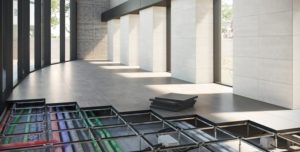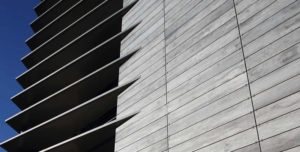Technical


A modern material for contemporary architecture | by Livio Salvadori
Ceramic is an age-old material that has played an important role in the history of architecture ever since antiquity. As production technologies developed, it was adopted for many works of architecture that defined different periods and cultures and it continues to be used today in keeping with modern aesthetic and design criteria without sacrificing its essential decorative and functional qualities.
For example, ceramic played a vital role in the work of Antoni Gaudí and other great contemporary architects such as Saarinen, Berlage, Plecnik, Mendelson, Alvar Aalto and Gio Ponti. It is also used in an innovative and original way in many present-day projects by leading international architects such as Jørn Utzon, Norman Foster, Renzo Piano, Jean Nouvel, Kengo Kuma and Daniel Libeskind.
The material’s success is largely attributable to its intrinsic aesthetic and performance characteristics and its ability to evolve constantly. In other words, ceramic is not just a decorative element that contributes to the aesthetics and originality of a space or a work of architecture, it also plays a key role in terms of technical and environmental quality. It is a natural material that has evolved into a key building component, an advanced compositional element that meets a wide range of different design needs, including necessity and beauty, function and decoration.
The Italian ceramic tiles that are produced today are new-generation materials designed specifically for use in architecture. Their aesthetic and functional characteristics make them ideal for meeting the different needs of contemporary living spaces and they adapt perfectly to any kind of application: warm and welcoming in domestic spaces, hygienic in public places, practical in industrial facilities, hi-tech in special applications for ventilated façades and raised floors, and versatile in building renovation and urban redevelopment projects.
Interior and exterior floors and walls are now just one of the many different applications of ceramic tiles and slabs. Unlike in the past when these functional elements were largely relegated to decorative aspects of the building, they have gradually evolved into full-scale building components with outstanding technological and architectural qualities.
The porcelain, single and double fired and terracotta tiles now available are extremely heterogeneous in terms of their aesthetic and technical characteristics, so this variability in performance and suitability for specific applications must be taken into account in the design and installation of the tiling. An in-depth knowledge of all these aspects is therefore vitally important when choosing ceramic materials for a specific architectural application. Choice of the right type of ceramic tile is a decision that will affect the architect and everyone else involved in every stage of the building process from design to construction, management and maintenance, and ultimately the demolition of the building and its repercussions in terms of environmental impact.
November 2018










